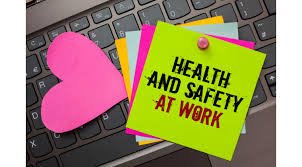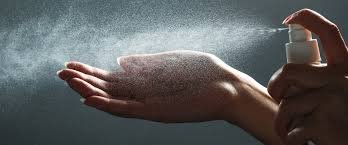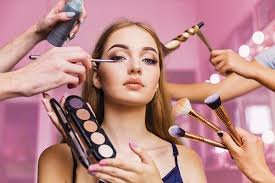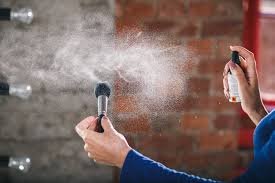Health & Safety at Work for Makeup Artists

● The Health and Safety at Work Act 1974 – this act requires your employer to provide you with
information, instruction, training, and supervision to ensure, so far as is reasonably practicable, the
health and safety at work of their employees.
● Management of Health and Safety at Work Regulations 1999 – this identifies situations where health
and safety training is particularly important. For example, new starters or where new skills are needed in
a changing workplace. This regulation also obliges employers to carry out risk assessments. This
includes implementing appropriate measures to protect the health and safety of their workforce.
Who is Responsible for Safety?
● Production company – the overall health and safety of the crew and cast is the production
company’s responsibility. The designated competent person will likely be the producer. Other named
people will also be responsible for monitoring health and safety on a day-to-day basis.
● Studios, theaters and other premises – owners, landlords or management of a building have
some responsibilities. For example, a theater has to adhere to strict fire codes. It includes having
appropriate fire safety measures in place, such as clearly marked evacuation routes.

● Specialists – a production company might hire a safety specialist to oversee all aspects of health and
safety. Likewise, stunt coordinators, firearms experts, animal handlers and pyrotechnic providers are
knowledgeable about their particular activities and the risks involved.
● Vehicles such as trailers – have facilities people responsible for ensuring they are set up safely,
following the hire company’s policies.
● Head of makeup – has a responsibility for their team. For example, they should ensure the right
working environment is provided, breaks are taken, and flammables are stored correctly.
● Employee or freelancer – individuals have a responsibility to follow the workplace’s health and
safety procedures. They also have to act sensibly, use the equipment correctly and take reasonable
precautions to prevent incidents.
● Self-employed makeup artist – if work activities pose no
potential risk to the health and safety of other workers or members of the
public, then health and safety law will not apply to you. However, if you
are carrying out activities like bleaching or airbrushing, then it is likely
health and safety rules apply.
In summary, the overall responsibility for health and safety lies with the
production company. However, it is not just down to them. Everyone
working on the production has to act with safety in mind at all times.
Sets are busy places with cables, equipment and people all over the
place!
Risk Assessments
● A risk assessment is a procedure that identifies potential hazards and how likely they are to cause harm.
Hazards could be a substance, activity or process. Policies and procedures are then put in place to
reduce the risk.
● The film industry is full of hazards and risks. For example, there are many trip hazards like cables,
equipment, and uneven ground at locations. Additionally, some equipment or props are heavy to move,
or items can fall over. Working in a theater also has risks, such as navigating a dark and cramped
environment full of trip hazards. The list goes on!
● By doing risk assessments, the production company can assess whether sufficient controls and
measures are in place to prevent an incident, damage or injury.
● The call sheet should always include any risk assessments relevant to the day’s filming. You must read,
understand and follow it.

● The head of makeup should also do risk assessments relating to the makeup team’s working
environment and any hazardous substances used. Ideally, there should be regular briefings with their
team that should also include health and safety matters.
No matter what the legislation is in your country, here are a few things that the makeup department should do. It
is simply a matter of good working practice. We’ve also listed things best not to do. Stay safe!
Do
● Read the call sheet – all risk assessments for that day’s filming will be attached, so read them
thoroughly. It should also list the heads of department, emergency contact numbers, and first aiders.
● Wear sensible shoes – that are flat, comfortable and enclose your toes and feet properly.
● Have a good posture – be careful of leaning, having to bend and picking up heavy items. Ensure
the chairs the actors sit in can be adjusted to suit your height to prevent you from bending.
● Store flammable makeup items correctly – for example, acetone and IPA are flammable
substances and must be stored according to instructions provided on the packaging. Also, keep them
away from heat sources and naked flames. Dispose of correctly.
● Clean up all spills and cut hair immediately – to prevent anyone slipping.
● Work hygienically – to prevent cross-contamination. Good working practices are essential. It is even
more important now that Covid-19 is part of our lives for the foreseeable.
● Ensure good ventilation – especially when using things like solvents, hairsprays or airbrush equipment.
● Know who the First Aider is – they should be listed on the call sheet. Large shoots also have a
unit nurse, doctor or paramedic on set to deal with any accidents.
● Know how to act in an emergency – for example, identify where the fire escape route is.
Similarly, know who to contact first in case of emergency or accident.
● Report any safety concerns immediately – if you see anything of concern, report it as soon as
possible to your head of department, one of the AD team or other appropriate person.Don’t
● Run on set – no matter how pressed for time, running is never a good option.
● Block fire exits – with kit, bags, or anything. Likewise, keep all evacuation routes clear.
● Leave kit or bags lying around – put things to one side out of the way. Better still, put stuff under
your section or in a cupboard. Trip hazards cause many accidents at work. Put your stuff away!
● Smoke on set – there will be a designated area for smokers. If you are working in a fragile
environment, smoking might be banned altogether. Only leave the set during official break times – don’t
just wander off.

● Drink alcohol or take illegal drugs – this is a big no-no. You should not be at work under the
influence of any alcohol or an illegal drug. Speak to your head of department should you need to take
medication that could make you drowsy.
● Plug appliances in without getting the OK – it is fine to use plug sockets in the trailer, once it
has been set up by the facilities crew. However, if you are at a new location and need to use extension
leads or old-looking plug sockets are present, ask one of the electricians for clarification



